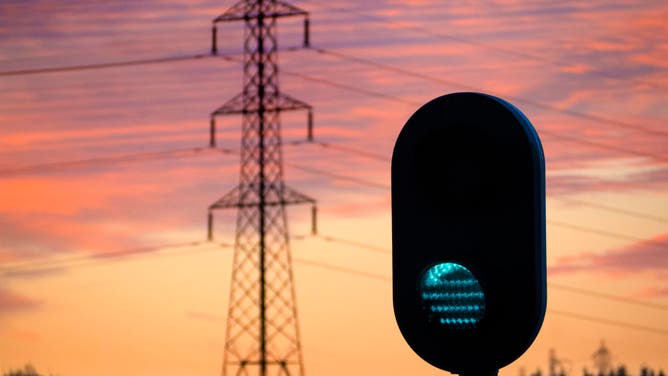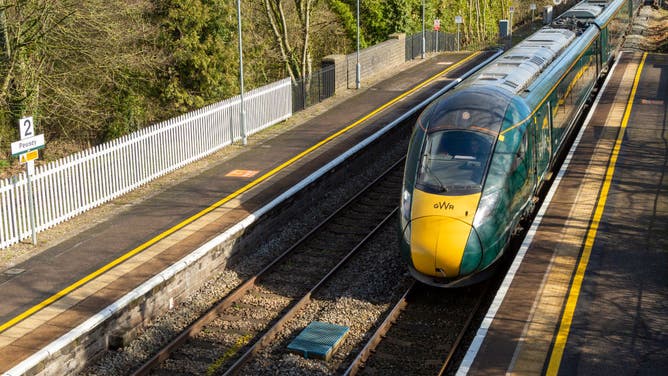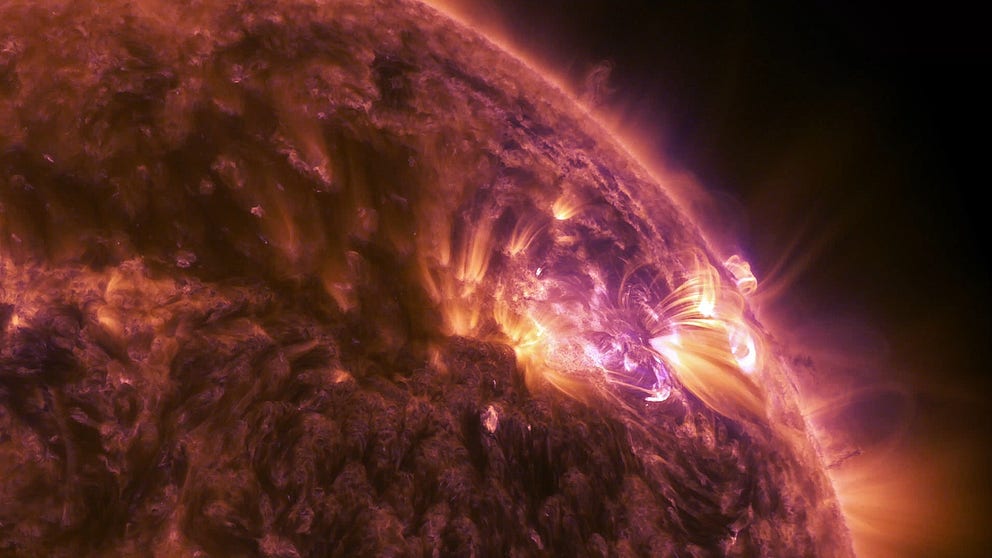Solar storms could switch railway signals from red to green in 'worst-case scenario,' new study finds
The researchers found that geomagnetically currents induced in the rails could cause rail signaling to malfunction, including "wrong side" failures, turning a red signal to green.
Space weather explained: What is a solar flare?
The largest explosions in the solar system, a solar flare is an explosion of energy that occurs on the sun’s surface, often appearing as a localized burst of bright light.
Space weather can impact critical infrastructure on Earth, from the power grid to GPS navigation, and researchers behind a new study say geomagnetic storms could also disrupt the most used form of public transportation: trains.
Geomagnetic storms don’t usually impact the public unless they look for the beautiful Aurora lights created from interactions when charged particles from the Sun hit Earth’s atmosphere. However, a strong (G3) storm can cause intermittent disruption to satellite navigation and low-frequency radio signals. This is why NOAA’s Space Weather Prediction Center issues space weather forecasts to help spacecraft and radio operators and power providers prepare their systems for potential impacts.
MEET STEVE: A NEW SPACE WEATHER PHENOMENA BEING SEEN WITH AURORA LIGHTS
A study published this week by researchers at Lancaster University in the United Kingdom used data from Network Rail, the operators of Britain’s railway infrastructure, and modeling of geomagnetically induced currents (GIC) to show space weather storms could cause rail signaling to malfunction.

File photo: A signal light just outside Radley's railway station in Oxfordshire, England. (Photo by: Planet One Images/UCG/Universal Images Group via Getty Images)
Cameron Patterson, a fourth-year Ph.D. student, and Professor Jim Wild, of Lancaster University, led the research looking at two electrified rail routes in the UK: the Preston to Lancaster section of the West Coast Main Line, and the Glasgow to Edinburgh line.
The researchers found that GICs induced in the rails could cause rail signaling to malfunction, including "wrong side" failures.
"Blocks that contain trains where the signals are red could potentially be turned green by the effects of space weather and then could potentially lead to a collision in the sort of worst-case scenario," Patterson said of wrong-side failures.
Previous research published in March by the study authors found space weather could flip the switch from green to red, known as a right side failure. However, this latest development may have more dangerous consequences and arise with a weaker geomagnetic storm.
"What we found during our research is that to cause the right side failures, the sort of non-safety critical case, you're probably looking at a (solar) storm that occurs maybe once every 30 years, but for the wrong side failures, which is sort of the more hazardous case, you're looking at maybe once every 10 to 20 years," Patterson said. "So it's slightly more common."

File photo: GWR Intercity Express train arriving at platform Pewsey railway station, Wiltshire, England, UK, West Coast Main Line. (Photo by: Geography Photos/Universal Images Group via Getty Images)
(Getty Images)
The two rail lines for this study were chosen because they have DC track circuits. Patterson said these types of signaling systems seem to be potentially most at risk to space weather, according to previous studies.
The routes were also chosen for their differing geology.
WHAT ARE THE 5 CATEGORIES THAT MEASURE GEOMAGNETIC STORMS?
"Preston to Lancaster is sort of a generally north-south orientated line, and Glasgow to Edinburgh is generally sort of an east-west orientated line," Patterson said. "The geology up there is way different than it is down in present Lancaster, as well … that can have an effect on the size of the electric fields that you see."
For the study, the researchers considered geological structure impacts along with the strength of a geomagnetic storm. NOAA's SWPC has a 5-category rating for solar storms, with a G5 being an "extreme" event causing widespread voltage control problems and creating Aurora lights as far south as Florida.
"The thing that we care about the most when it comes to the model that we've developed is the strength of the electric fields that get generated at the ground during these geomagnetic storms. And that can depend on a lot of different things. It could be the size of the storm itself, but also the sort of underlying geology of the, you know, the area that you're in the country," Patterson said.
The U.S. Geological Survey and the British Geological Survey monitor Earth's magnetic fields and provide geoelectric maps that help technical operators during space weather events.
The study comes at a time when solar activity is ramping up as the Sun approaches solar maximum in its 11-year cycle. NOAA’s Space Weather Prediction Center (SWPC) forecasts increasing sunspots and associated solar flares around the Solar Maximum expected next year.
THE DAY THE NORTHERN LIGHTS COVERED THE PLANET: HISTORY OF EARTH'S GREATEST SOLAR STORMS
Still, Patterson said rail commuters should not be concerned that every geomagnetic storm will jeopardize their travel.
"It's just important that the industry is aware that these things can happen," Patterson said. "In the UK, you know, we're telling them these vulnerabilities potentially exist to your systems. Here's the science. This is what we found."
The study authors say UK rail operators are following the research closely.
Patterson said it’s possible the research could be expanded to more rail lines in the UK as well as into Canada and the U.S. While in the U.S. presenting his research this month, Patterson met with Natural Resources in Canada and NOAA’s Space Weather Prediction Center to discuss the findings.
